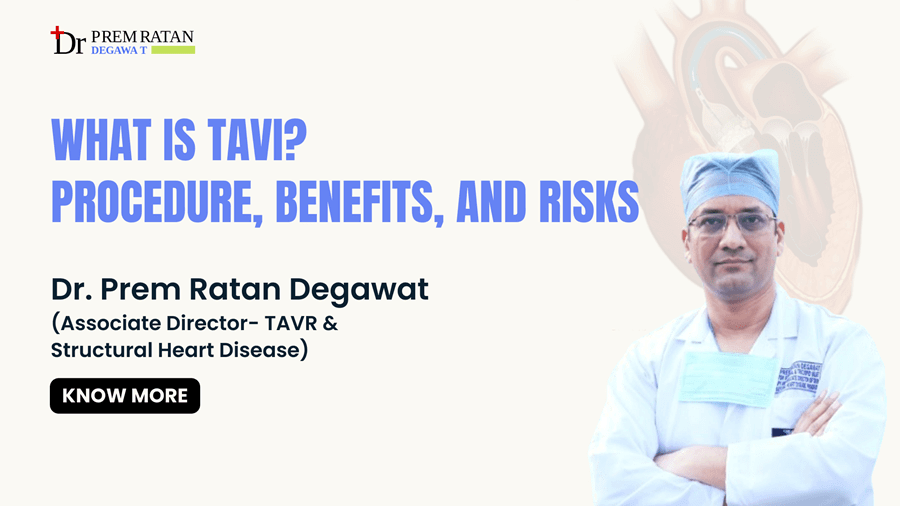Are you experiencing chest pain, fatigue, or shortness of breath upon exertion? These symptoms could be indicative of a narrowed aortic valve, a condition known as aortic stenosis. The aortic valve plays a vital role in your heart’s function, ensuring blood flows efficiently between the left ventricle (lower pumping chamber) and the aorta (main artery). When this valve stiffens and narrows, it restricts blood flow, leading to the aforementioned symptoms and potentially impacting your overall health.
Fortunately, there’s a minimally invasive procedure called TAVI (Transcatheter Aortic Valve Implantation) or TAVR (Transcatheter Aortic Valve Replacement) that can offer significant relief. This blog post delves deep into TAVI/TAVR, exploring its intricacies, benefits, risks, and who might be a suitable candidate.
Aortic Valve
To understand TAVI/TAVR, it’s crucial to grasp aortic stenosis. The four valves in your heart act as gates, ensuring blood flows in the correct direction. The aortic valve, located at the base of the aorta, is responsible for allowing blood to pump out of the left ventricle and into your body.
Aortic stenosis occurs when the aortic valve leaflets (thin flaps) become stiff and thickened, hindering the proper opening of the valve. This restricted flow of blood can lead to various complications, including:
- Angina (chest pain): Reduced blood flow to the heart muscle can cause chest pain, especially during exertion.
- Shortness of breath: The heart struggles to keep up with the body’s demand for oxygen, leading to breathlessness, particularly with activity.
- Fatigue: The body’s tissues don’t receive enough oxygen-rich blood, resulting in fatigue and tiredness.
- Lightheadedness or fainting: In severe cases, the lack of blood flow to the brain can cause dizziness or fainting.
- Heart failure: If left untreated, aortic stenosis can eventually weaken the heart muscle and lead to heart failure.
What is TAVI/TAVR?
Traditional open-heart surgery has been the gold standard for aortic valve replacement. However, TAVI/TAVR offers a groundbreaking alternative for many patients. This minimally invasive procedure replaces the diseased aortic valve with a new, artificial valve without the need for a large chest incision.
The TAVI Procedure: A Step-by-Step Breakdown
TAVI/TAVR is typically performed under local anesthesia with sedation. Here’s a detailed breakdown of the procedure:
- Access: A thin, flexible catheter is inserted through a small incision in the groin, leg artery, or chest, depending on the approach chosen by your doctor.
- Valve Delivery: The collapsed replacement valve is carefully maneuvered through the catheter to the narrowed aortic valve.
- Valve Deployment: Once positioned correctly, the new valve expands within the narrowed valve, pushing the leaflets aside and creating a wider opening for blood flow. Different TAVI/TAVR valves utilize various deployment mechanisms.
- Catheter Removal: Once the new valve is securely in place, the catheter delivery system is carefully removed.
The Advantages of TAVI:
Compared to traditional open-heart surgery, TAVI/TAVR boasts several advantages:
- Minimally invasive: Smaller incisions translate to less pain, scarring, and a faster recovery time.
- Reduced hospital stay: Patients typically go home within a few days of the procedure.
- Suitable for high-risk patients: TAVI/TAVR can be a viable option for patients deemed unsuitable for traditional surgery due to age or underlying health conditions.
- Improved quality of life: Relief from symptoms like chest pain, shortness of breath, and fatigue can significantly improve a patient’s quality of life.
Potential Risks and Complications Associated with TAVI/TAVR
As with any medical procedure, TAVI/TAVR carries some potential risks, including:
- Bleeding: Bleeding at the access site or within the body is a possibility.
- Stroke: There’s a small risk of blood clots dislodging during the procedure and traveling to the brain.
- Paravalvular leak: A small leak may occur around the newly implanted valve, requiring further intervention in some cases.
- Vascular complications: Issues like damage to the blood vessels at the access site can occur.
- Heart rhythm problems: Temporary or permanent changes in heart rhythm may be observed.
TAVI Recovery: A Quick Look
Hospital (1-3 days):
- Monitor vitals & valve function
- Manage pain
- Begin movement
Home (1-2 weeks):
- Rest & incision care
- Medication routine (blood thinners)
- Start physical therapy (optional)
- Heart-healthy diet
Weeks 2-6:
- Gradually increase activity as tolerated
- Potential return to work (2-6 weeks)
- Regular follow-up appointments
Beyond 6 Weeks:
- Maintain healthy lifestyle
- Long-term follow-up with cardiologist
Who is a Good Candidate for TAVI?
TAVI offers a new lease on life for many patients with aortic stenosis! Here are some factors that make you a good candidate for TAVI:
- Improved Quality of Life: If severe symptoms like chest pain and shortness of breath limit your activities, TAVI can help you regain your energy and enjoy life to the fullest.
- Minimally Invasive Option: For patients deemed high-risk for traditional surgery due to age or health conditions, TAVI’s minimally invasive approach offers a valuable alternative.
- Broader Range of Patients: TAVI may be a suitable option for a wider range of patients compared to traditional surgery.
Consult with a cardiologist! They’ll assess your overall health, heart anatomy, and the severity of your symptoms to determine if TAVI is the right choice for you.
Finding the Right Doctor for TAVI/TAVR
Dr. Prem Ratan Degawat is a leading TAVI expert in Rajasthan with over 600 procedures, including complex cases. His experience extends beyond India, with participation in European research on safe TAVI procedures. Dr. Degawat’s qualifications include fellowships in Complex Interventional Cardiology and Structural Heart Disease/TAVR (Italy). Schedule a consultation in Jaipur for expert TAVI/TAVR guidance.
Conclusion
TAVR (Transcatheter Aortic Valve Replacement) revolutionizes cardiac care, offering a minimally invasive procedure that replaces a diseased valve without extensive open-heart surgery, making it a viable option for those unsuitable for traditional surgery.
As TAVR technology continues to advance, it’s poised to become the gold standard for treating heart valve conditions. Dr. Prem Ratan Degawat, a leading TAVI expert in Rajasthan and renowned cardiologist in Jaipur, exemplifies this progress. His impressive record of over 600 TAVR procedures, including complex cases, and participation in European TAVR safety research positions him as a trusted authority for patients seeking expert TAVR care in Jaipur and Rajasthan.
FAQs
1. Is TAVI suitable for all patients with aortic valve disease?
While TAVI has expanded its eligibility criteria, not all patients may be suitable candidates. Factors such as age, overall health, and valve anatomy play a crucial role in determining candidacy.
2. How long does the recovery process take after TAVI?
Recovery time varies from patient to patient but is generally shorter compared to traditional surgery. Most patients can resume normal activities within a few weeks following the procedure.
3. Are there any dietary restrictions after undergoing TAVI?
Patients may be advised to follow a heart-healthy diet rich in fruits, vegetables, and lean proteins. However, specific dietary recommendations may vary depending on individual health status and medical history.
4. What are the potential risks associated with TAVI?
While TAVI is considered safe, there are risks of complications such as bleeding, stroke, and valve-related issues. It’s essential to discuss potential risks and benefits with your healthcare provider before undergoing the procedure.
5. Can TAVI be performed on patients who have had previous heart surgeries?
In some cases, TAVI may be feasible for patients who have undergone prior heart surgeries. However, the decision depends on various factors, including the patient’s overall health and the condition of the heart valves.
Disclaimer: This blog post is intended for informational purposes only and should not be construed as medical advice. Always consult with a qualified healthcare professional for diagnosis and treatment of aortic stenosis or any other medical condition.


